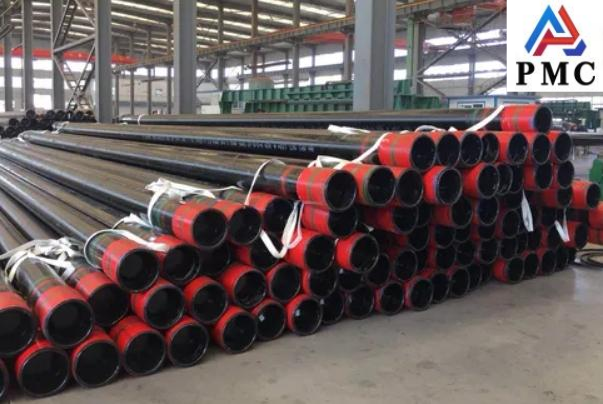
Casing Pipe Size
In oil and gas well construction, casing pipe size stands as a critical factor, with direct impacts on well integrity, operational safety, and drilling efficiency. Casing pipes function as structural supports to stabilize the wellbore and block off fluid contamination between different geological layers. In this article, we’ll explore what casing pipes are, the basic sizing parameters, standard dimensions, and how to choose the right size based on well conditions.
What is a casing pipe?
Casing pipes are large-diameter steel pipes used to line oil and gas wells. They are installed in different sections of the well to support the wellbore, protect fresh groundwater, and isolate high-pressure zones. Casing is typically cemented in place after installation and must withstand external pressures, internal fluid pressures, and corrosive conditions.
Casing pipe size
Casing pipe size refers to several key dimensions and specifications that define its performance and compatibility with well design:
Outer Diameter (OD): The external width of the pipe, measured in inches. Common OD sizes include 4-1/2", 5-1/2", 7", 9-5/8", 13-3/8", and 20".
Wall Thickness: Determines the pipe’s strength and pressure resistance. It varies depending on the pipe weight and grade.
Weight per Foot (lb/ft): This reflects wall thickness and helps engineers calculate overall pipe strength and load-bearing capacity.
Steel Grade: Such as H40, J55, N80, and P110, which define the pipe’s mechanical properties like yield strength and tensile strength.
Thread Type: Ends are threaded for connection. API standard connections include LTC (Long Thread), BTC (Buttress Thread), and premium connections for high-pressure applications.

Common casing pipe size and application
Here’s a quick guide to commonly used casing pipe sizes and their typical applications in oil and gas wells:
|
Casing OD (inches) |
Common Name |
Typical Use |
|
20" |
Conductor Casing |
First layer, prevents surface washout |
|
13-3/8" |
Surface Casing |
Isolates freshwater zones |
|
9-5/8" |
Intermediate Casing |
Withstands higher pressures/depths |
|
7" |
Production Casing |
Houses production tubing |
|
4-1/2" |
Liner/Production String |
Final section, often a liner |
Standards and specifications for casing pipe
Casing pipe sizes and quality are governed by several international standards, ensuring consistency and performance under harsh conditions. The most widely adopted is:
API 5CT (American Petroleum Institute): Specifies dimensions, tolerances, grades, and test requirements for casing and tubing.
ISO 11960: Equivalent to API 5CT, used in many international projects.
ASTM A53 / A106 (in some structural or non-well applications)
API 5CT includes detailed casing size charts that cover OD, weight, wall thickness, and drift diameter for each size.
How to select the right casing pipe size?
Selecting the right casing pipe size combines engineering analysis and field experience, with key factors:
1. Well depth: Deeper wells need thicker walls to resist higher pressures.
2. Formation conditions: High pressure/temperature demands stronger grades and adequate wall thickness.
3. Hole/bit size: Casing must fit the drilled hole, leaving space for cement and internal tubing.
4. Cementing needs: Proper clearance between casing and borehole ensures effective cementing.
5. Future use: Final casing should accommodate production tubing and potential workovers.
Read more: Steel Well Casing Pipe Sizes
- 【Prev】 : ASTM A106 Pipe Specification
- 【Next】 : Seamless Pipe VS MS Pipe


